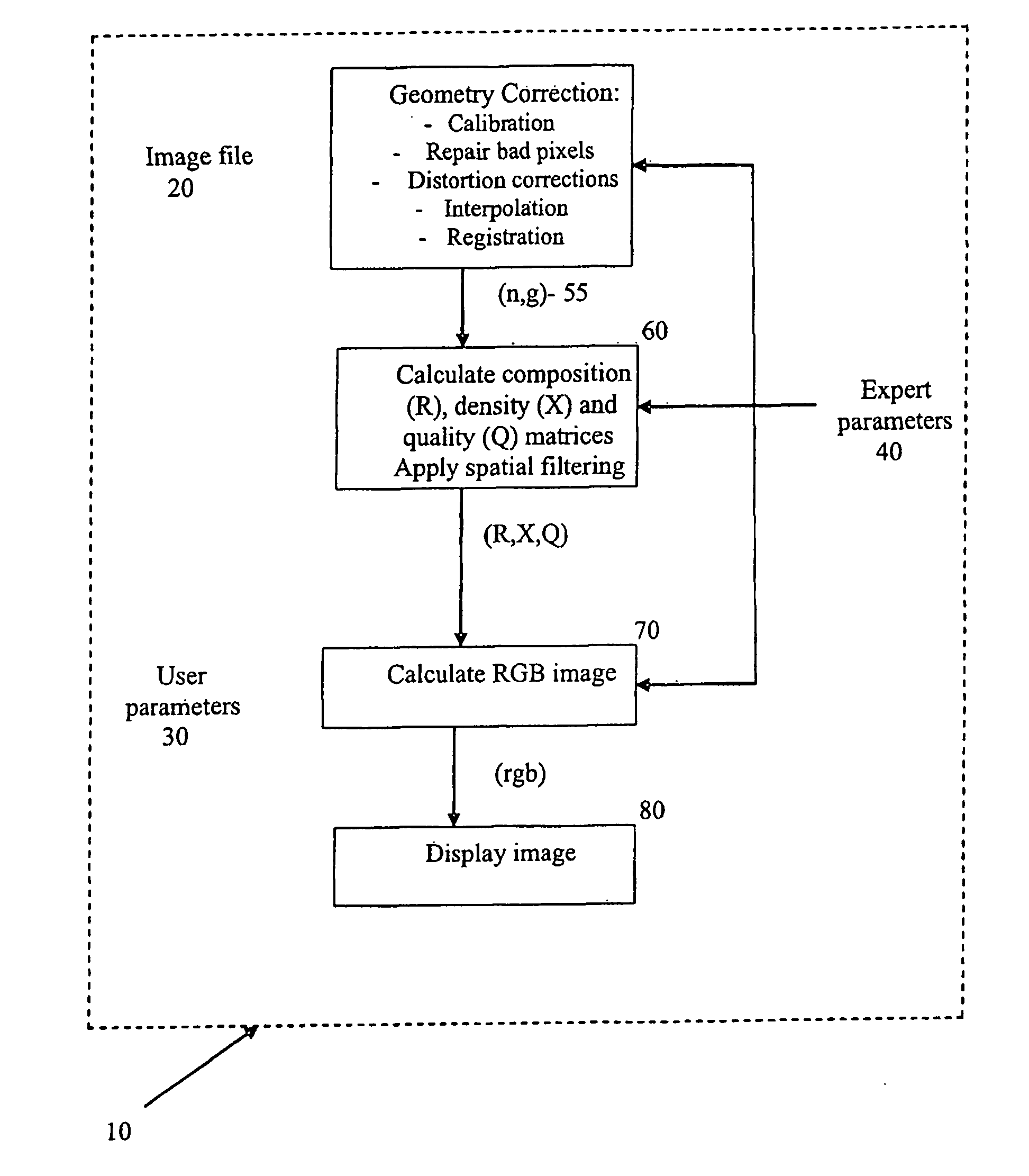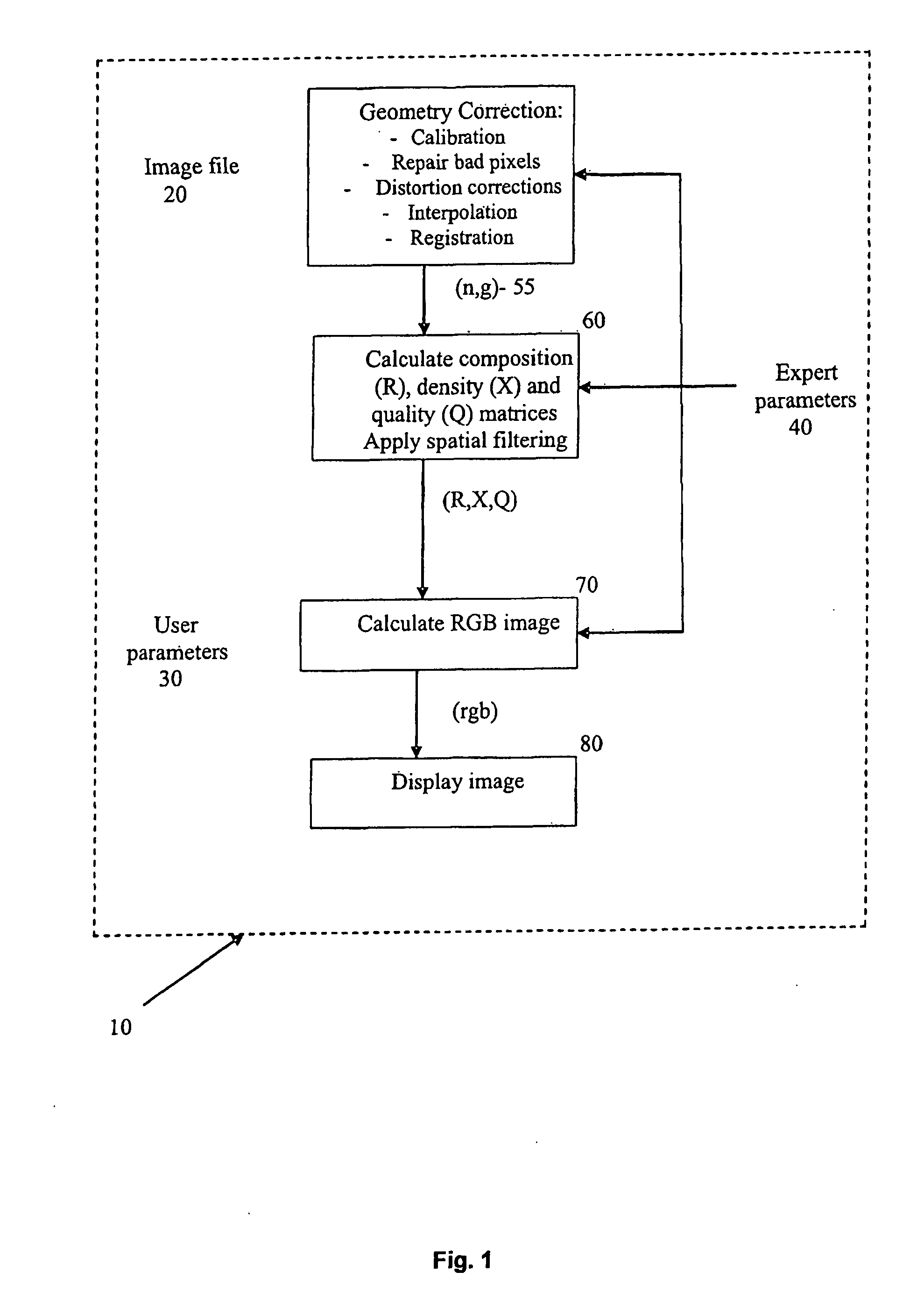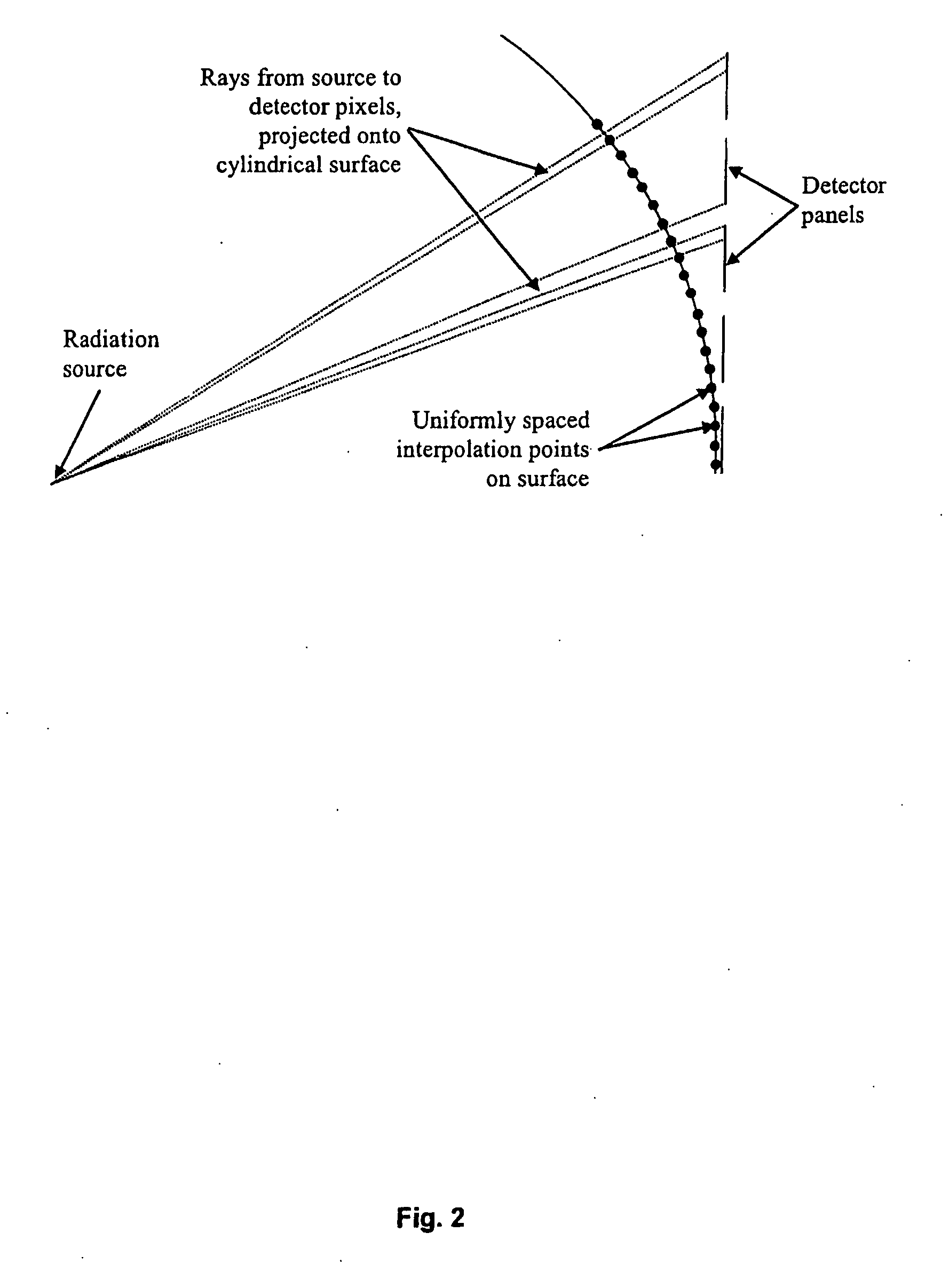Data Display System and Method
a data display and data technology, applied in the direction of material analysis using wave/particle radiation, optical radiation measurement, instruments, etc., can solve the problems of limited penetration of lower energy x-rays, limiting the use of thinner and lighter objects such as packages and luggage, and the display system fails to make best use of the differences between neutron and gamma-ray images. , to achieve the effect of enhancing image details, reducing geometric distortion, and increasing statistical noise in the flat region of images
- Summary
- Abstract
- Description
- Claims
- Application Information
AI Technical Summary
Benefits of technology
Problems solved by technology
Method used
Image
Examples
Embodiment Construction
[0072]FIG. 1 illustrates a schematic outline of a method 10 for processing image data from neutron and gamma-ray radiation having traversed through an object such as a unit load device ULD. The image data represents a measure of neutron attenuation and gamma-ray attenuation introduced by the ULD.
[0073]To obtain the image data, the ULD is scanned through radiographic equipment. The equipment includes two separate generators of radiation. The first is a sealed tube neutron generator having a D-T neutron emitting module to produce a neutron energy source having an energy of substantially 14 MeV. The second generator of radiation is a 60Co source to produce a source of gamma-rays having an energy of substantially 1 MeV. Both sources are situated within a shield housing which has a collimating slit cut into the shield to generate fan shaped radiation. A detector array is situated opposite the radiation sources and is housed in a detector shield which also has cut into it a collimating sl...
PUM
 Login to View More
Login to View More Abstract
Description
Claims
Application Information
 Login to View More
Login to View More - R&D
- Intellectual Property
- Life Sciences
- Materials
- Tech Scout
- Unparalleled Data Quality
- Higher Quality Content
- 60% Fewer Hallucinations
Browse by: Latest US Patents, China's latest patents, Technical Efficacy Thesaurus, Application Domain, Technology Topic, Popular Technical Reports.
© 2025 PatSnap. All rights reserved.Legal|Privacy policy|Modern Slavery Act Transparency Statement|Sitemap|About US| Contact US: help@patsnap.com



